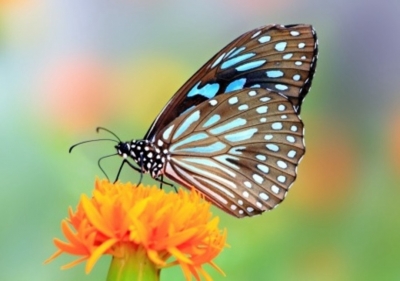
When you eat your food, depending on how it tastes, you can quickly decide whether you like it or not. You can thank the taste buds on your tongue for that important aspect of enjoying life (and discerning displeasure)! Butterflies, however, don’t have taste buds like us mammals. Their mouthparts mainly serve as a straw through which they suck up their food—no chewing necessary. Butterflies have chemoreceptors, a type of sensors, on their feet. These sensors act similar to how our taste buds do. A female butterfly will drum the leaves with her feet to release the juices in a plant. She “tastes” the chemicals released thus not to eat them, but for a different reason. She looks for the appropriate plant chemicals to check if the plant is safe (and not toxic) for the caterpillars before laying her eggs. Apparently, these sensors can detect “dissolved sugars in fermenting fruit”, which butterflies love. Without so-called “taste buds”, how do butterflies know what is nectar and what isn’t? Butterflies do taste their food, but not through their mouthparts. Instead, they do it through their feet! Having an animal’s feet serve as taste organs sounds preposterous, which is probably why researchers never even considered the possibility.
The thinking was that if humans and most other mammals had a tongue for taste, a similar organ must serve the same function in insects. Nature rarely works in such a straight and predictable manner. It was only in the late 1800s that researchers began to take a more out-of-the-box approach to the problem. This is when they discovered that it was the legs, not the mouthparts, that functioned as taste receptors in butterflies!
Insects are a varied bunch of organisms, making it difficult to generalize a feature across them all. Butterflies have mouthparts designed like straws, so they don’t really have a tongue. Such insects whose mouthparts are only designed to suck liquids are called haustellate insects. Lepidoptera, the order to which butterflies and moths belong, and Diptera, the order to which flies belong, are both “leg tasters”. The taste buds are called contact chemoreceptors, taste receptors, or basiconic sensilla in some literature. These chemoreceptors are attached to nerve endings. When chemicals present in the insect’s surrounding come in contact with the chemoreceptors, they activate the nerves, which relay the information to the insect’s brain.
Credit : Science ABC
Picture Credit : Google




